
We have grown accustomed to the Communist News Network and other “liberal” mouthpieces comparing anything and everything they disagree with to Adolf Hitler and National Socialist Germany.
So it quickly caught my eye when a right-wing “news” blog evoked the comparison against the Democratic Party with the headline, “What Democrats and Nazis have in common” for two reasons: 1) Democrats are traditionally (and appropriately to my mind) compared to the Communist Party, and 2) I wondered what the DNC could possibly have in common with Nazi Germany. Citizen Free Press is an utterly opaque alt-news blog that positions itself as sort of an alternative to the more left-leaning Drudge Report. Indeed, it has a strong “right” bias and serves to promote the right-wing side of the Uniparty narrative. That they decided to go with the “Nazi” comparison instead of the more traditional “Communist” comparison was curious.
In any event, I guess I fell for the click-bait. It’s an old tactic: if you want people’s attention, call something “Nazi” or put a swastika on it.
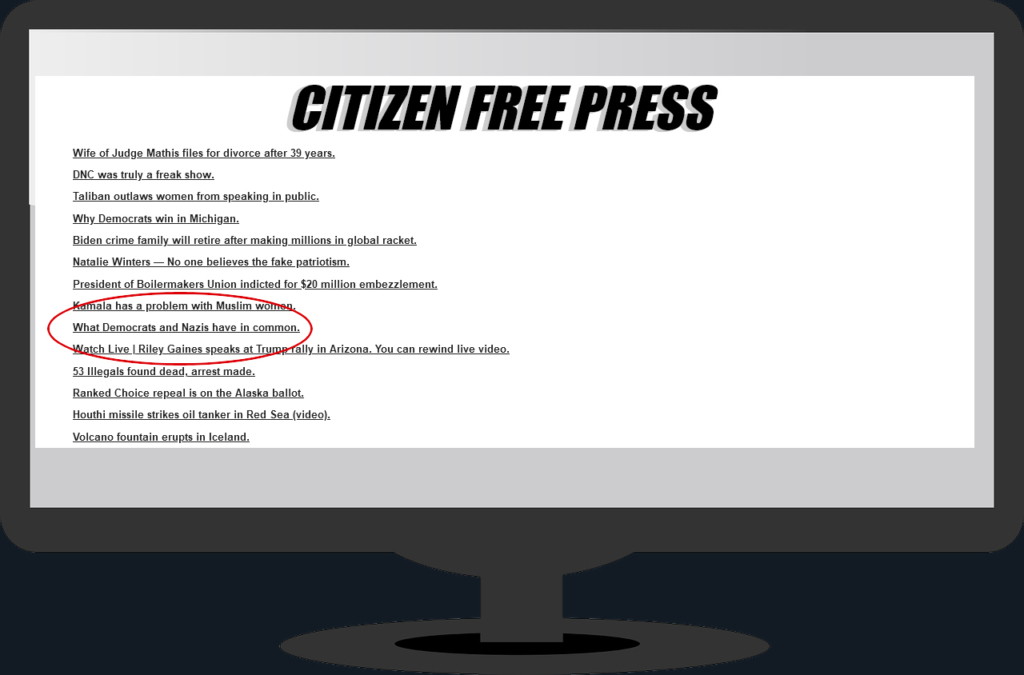
The link itself offers no context or comment. Instead, it routes directly to a page dedicated to explaining the Kraft durch Freude program (KdF) of National Socialist Germany.
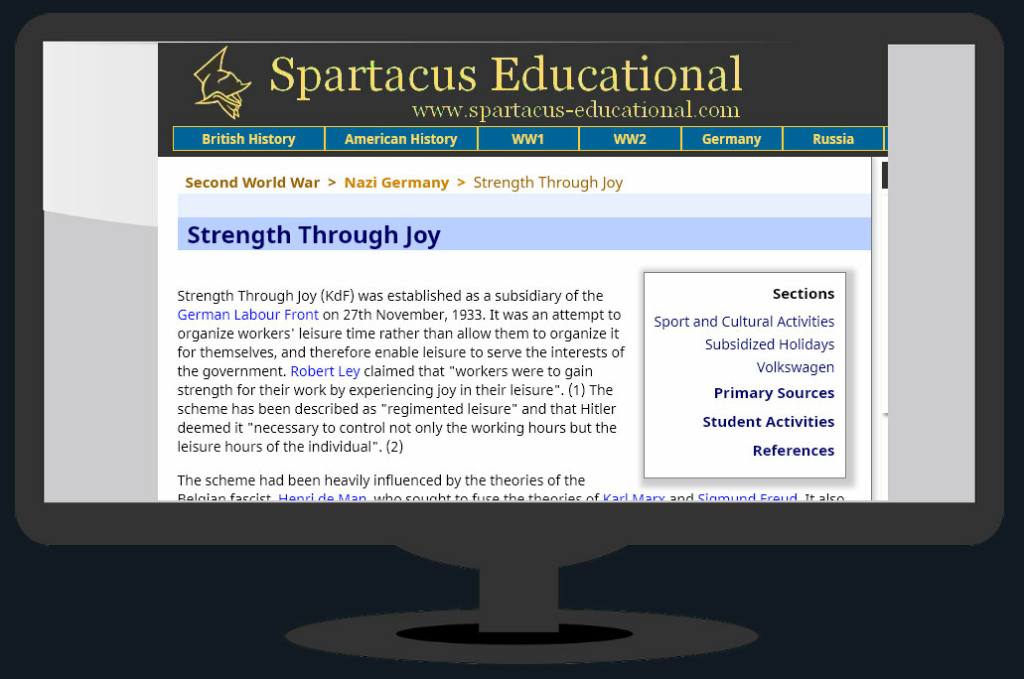
I suppose the reader is left to draw the comparison between recent Democratic talking-points and the KdF program, the idea being that the KdF program was evil and not to be wished for. To my mind, the comparison backfired: I suspect whoever decided that the link to the KdF page was a good idea didn’t bother to read past the first paragraph.
Strength Through Joy (KdF) was established as a subsidiary of the German Labour Front on 27th November, 1933. It was an attempt to organize workers’ leisure time rather than allow them to organize it for themselves, and therefore enable leisure to serve the interests of the government. Robert Ley claimed that “workers were to gain strength for their work by experiencing joy in their leisure”. (1) The scheme has been described as “regimented leisure” and that Hitler deemed it “necessary to control not only the working hours but the leisure hours of the individual(2).”
Yes, that does indeed sound pretty awful. CFP clearly read that, drummed up a link to compare it with the Democommie Party, and moved on.
Unfortunately for them and their ill-informed readers, it’s not true, and reading further into the page actually helps to promote and advocate for the KdF program. We’ve mentioned the KdF program before on this blog, as well as looked at the high-regard National Socialism holds for the average worker.
The problem here is found in the sources for the information provided and how it is twisted to create a narrative that simply is not true. For example, the statement “It was an attempt to organize workers’ leisure time rather than allow them to organize it for themselves…” is nothing but an opinionated regurgitation of the last sentence: “Hitler deemed it ‘necessary to control not only the working hours but the leisure hours of the individual’ (2).”
That didn’t sound right to my ears. Hitler had great respect for the German worker. So I looked at the source cited to make this assertion: It was William L. Shirer’s Rise and Fall of the Third Reich.

Ah, that explains it.
If one seeks a non-Jewish source more critical of National Socialist Germany, you would be hard-pressed to find one more biased than Shirer.
William L. Shirer was an American corespondent in Germany from 1934 to 1940 and the author of Berlin Diary and The Rise and Fall of the Third Reich. To be fair, he was on-hand for many of the notable events during that time, and for many years, his works served as the “gateway drug” for those interested in learning about the Third Reich, myself included.
But he was far from an objective, neutral observer: After leaving Germany, Shirer was a director of the Society for the Prevention of World War III, which lobbied after the war for a harsh peace with Germany. The Society for the Prevention of World War III was an organization set up in the U.S. in 1944 that advocated a harsh peace for Germany in order to completely remove Germany as a future military threat. Evidently the fallout from the Treaty of Versailles offered no guidance.
The organization was a spin-off of the “Writers’ War Board”: From 1944 until 1948 prominent U.S. policy makers launched a domestic propaganda campaign aimed at convincing the public to agree to a harsh peace for the German people, for example by removing the common view of the German people and the Nazi party as separate entities. The core in this campaign was the Writers’ War Board, which was closely associated with the Roosevelt administration. William L. Shirer was one of the board of directors.
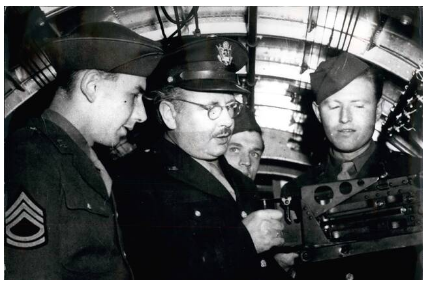

Returning to the KdF article in question, once we remove Shirer’s bias from the equation, it reads quite differently. Keeping in mind that the goals of the KdF program were to 1) generally improve the life of the average worker; 2) improve productivity (let’s be honest, happy workers are better workers); 3) perhaps most importantly, to begin to build the foundations of a true Volksgemeinschaft by allowing exposure to forms of art, entertainment, and leisure which certain socio-economic groups in Germany had hitherto been unable to access or afford.
It is important to remember that Germany came fairly late to the international game of Industrialization and National identity. Until it was unified in 1871 (and really, long after) the average German identified with their town or local community first and their Nation second. The KdF program, seen in this light, helped to serve in unifying the people and to affirm their National identity.
It also had a lot to offer:
[The KdF program encouraged] factory owners to modernize their offices and to have some flowers about. But we did not stop there. Lawn was to take the place of asphalt. What had been wasteland was to be turned into little parks where the workers could sit during breaks. We urged that window areas within factories be enlarged and a workers’ canteen set up… We provided educational movies and a counseling service to help businessmen on questions of illumination and ventilation… One and all devoted themselves to the cause of making some improvements in the workers’ living conditions and moving closer to the ideal of a classless People’s Community – Albert Speer Inside the Third Reich
Sounds good to me. It KdF program also:
- Employed about 7,000 full-time workers and 135,000 volunteers.
- Subsidized theater, opera, and concert tickets, as well as cheap instruction in tennis and sailing—and thousands of members took advantage of them annually. By 1934-35, over three million people were taking part in its physical education and gymnastics evenings, while many others took advantage of the cheap coaching it offered in tennis, golf, skiing, sailing and other upper-middle-class-sports.
- KdF-financed tourism programs, both inside and outside Germany. These programs enabled many workers to take their very first vacation trips. Up until 1939, about 43,000 KdF excursions were sold, many of them daytrips.
- Plays were performed in factories and specially organized KdF concerts, featuring important classical conductors and soloists, such as Carl Bohm, Eugen Jochum and Wilhelm Furtwanger, played to German workers.
- The KdF had its own ninety-piece symphony orchestra which continually toured the country and in 1938 over two and a half million people attended its concerts.
- In December 1935, Strength Through Joy arranged for 10,000 Germans to travel to London to watch their team play England at White Hart Lane.
- Strength Through Joy commissioned the building of two 25,000-ton purpose-built ships and chartered ten others to handle ocean cruises. These cruise liners sailed as far as the Norwegian fjords, Madeira, Libya, Finland, Bulgaria and Turkey. 180,000 Germans went on cruises in 1938 and the volume of tourism doubled. In 1939 alone, 175,000 people went to Italy on organized trips, a good number of them traveling on cruise liners.
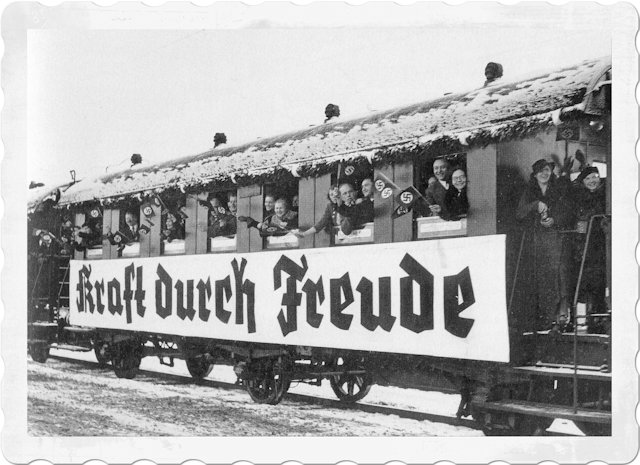
The goal of this state-run program was to break down class barriers and help solidify the allegiance of the populace to the state. At discount prices, travelers could take local daytrips or cruises to islands in the Baltic and North Sea, as well as to Spain and elsewhere. Even ski vacations, previously only affordable for well-to-do vacationers, were now available to working-class tourists. -Source: GermanHistoryDocs
Then, of course, there is the KdF-wagen. What we now call the Volkswagen. Hitler loved automobiles, and very much wanted all Germans to at least have the option to own one. To this end, the KdF-wagen was created. It was designed from the start to be affordable to the average worker, and with a small deduction from one’s paycheck, could be purchased on an installment plan. Much hay is made from the fact that because of the shift from civilian to wartime production, no KdF-wagen was ever delivered to an installment plan purchaser. But it is important to remember: the US automotive industry suspended production of automobiles for civilian use “for the duration” as well. Had Germany won the war, there is not doubt that once production of the Kübelwagen (the military version of the KdF-wagen) ceased, production of the KdF-wagen would have resumed.
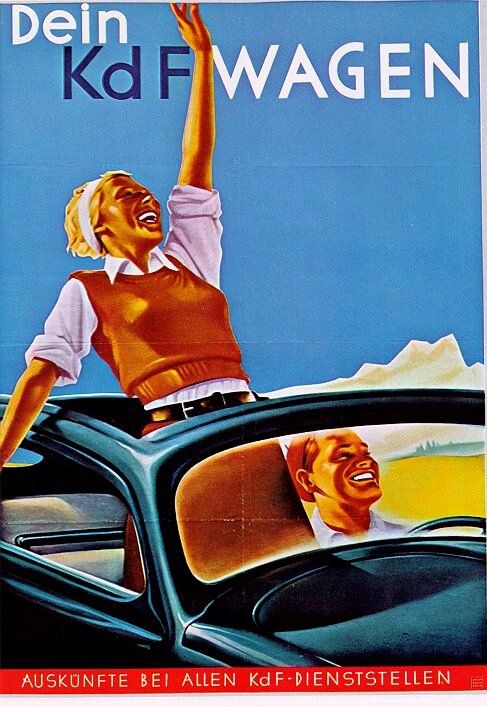

As you can see, the KdF program was remarkable. Indeed, it was one of the most popular aspects of National Socialist Germany, both inside the country and without:
“The governments of other European countries took an interest in what the KdF was doing. The British ambassador in Berlin, Sir Neville Henderson, pointed out: “There are, in fact, many things in the Nazi organization and ideology, which we might study and adapt to our own use with great profit both to the health and happiness of our own nation and old democracy. “
Once you remove the bias from the narrative and simply look at the facts, the article to which the CFP linked and which we have reviewed becomes much more palatable and informative. And clearly has nothing to do with Democrats.
Swing and a miss Citizen Free Press.

Amerika Erwache!

America Awake
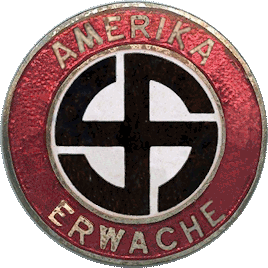
Leave a Reply